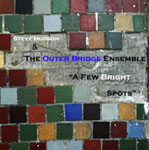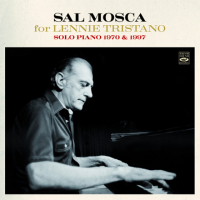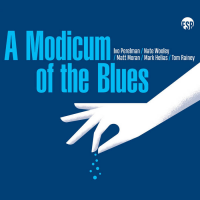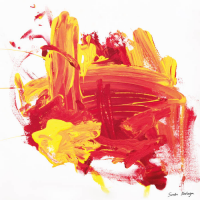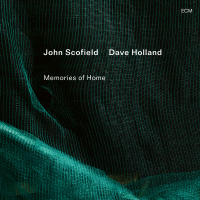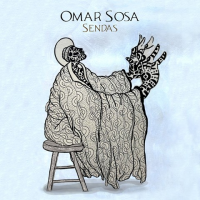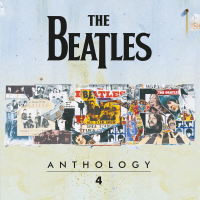Home » Jazz Articles » Album Review » Hugh Marsh: Hugmars
Hugh Marsh: Hugmars
While there are plenty of artists drawing inspiration from a multiplicity of sources, few are intrepid enough (alongside original material) to bring together material from Sun Ra, Sly and the Family Stone and Jaco Pastorius. Ra's "Rocket #9" opens the disc, its theme re-imagined in the context of a loose, up-tempo burner. Ra's otherworldly chaos is retained but incorporates an extended rap and knotty arrangement that ultimately sets up a densely processed violin solo possessing a vocal-like expressiveness.
Improvisation lays the foundation for "The Crossing." A percussion-heavy intro leads into an accelerating 6/8 anchored by bassist Roberto Occhipinti and drummer Dafnis Prieto, and features another intense violin solo and, ultimately, Ursula Ruckert's poetry spoken over a density of jungle rhythms. Sly Stone's "Let Me Have It All" is greasier funk, with James Blood Ulmer providing a raw vocal delivery and Marsh delivering a gritty, distorted and frenzied solo.
In the same way that Norwegians including trumpeter Nils Petter Molvaaer and guitarist Eivind Aarset are reshaping the sound of their instruments, Marsh uses a myriad of devices to alter the sound of his violin. "Violinvocation #2" is, with the exception of Jonathan Goldsmith's B3 organ and Tanya Taqaq Gillis' throat singing, a multi-layered solo piece where Marsh evokes the sound of trains alongside ambient loops and strong pizzicato melodies that, at times, sound more like oud than baritone violin. "Mowgli/Balloon Song" mixes layers of violin, synths and B3 with drums and percussion to create an imaginative blend of percussion-heavy original material with one of Jaco Pastoroius' lesser-known compositions.
An album that could only be a studio concoction, Hugmars is clearly a combination of ideas grown out of improvisation and more preconceived notions. The lines between the two are often very fuzzy, though on "Om," featuring harmonicist Gregoire Maret, pianist Andy Milne, bassist Rich Brown and drummer Mark Kelso, the form is more clearly delineated. But Hugmars' greatest strength—Marsh's ever inventive playing aside—is it's integration of seemingly countless reference points into an hour of music that's focused and, for all its diversity, speaks with a remarkably unified voice.
Track Listing
Rocket #9; The Crossing; Let Me Have It All; Violinvocation #2; Mowgli: Balloon Song; OM; Sugarcane's Gone; Violinvocation #1.
Personnel
Hugh Marsh
violinHugh Marsh: violin (1, 2, 8); ring mod violins (2, 5); distorted violin solo (3, 7); pizz baritone violin (4); train violin (4); violin loop capture (4); pizz violins (5-7); MXR PT violin solo (5); ghost harm violins (6); buzz box violin (7, 8); pizz baritone violin loop (8), "78" violin (8), clavinet (1, 3); vibes (1), B3 (3, 6), MC505 loop (3, 6), Korg Triton (6, 7); James Blood Ulmer: vocal (1, 3), phone call (7); Kokayi: spoken word (1); Andy Milne: piano (1, 3, 6, 7); Rich Brown: bass (1, 3, 6, 7); Dafnis Prieto: drums (1, 2, 5, 7); Michael White: modcan (1); Ursula Rucker: poetry (2); Roberto Occhipinti: bass (2); Pancho Quinto: percussion (2); Pedro Martinez: percussion (2, 5), bata (3, 7), vocal (7); Lucumi: percussion (2); Marcos Diaz Scull: percussion (2); Lazaro Rizo: percussion (2); Maximino Duquesne: percussion (2); Mark Kelso: drums (3, 6); Tanya Taqaq Gillis: throat singing (4, 8); Jonathan Goldsmith: B3 (4); Gregoire Maret: harmonica (6); The Radio and Loneliness Horns (1, 3, 7): Kevin Turcotte: trumpet; Phil Dwyer: tenor saxophone; John Johnson: bass clarinet.
Album information
Title: Hugmars | Year Released: 2007 | Record Label: Cool Papa Records
Tags
PREVIOUS / NEXT
Support All About Jazz
 All About Jazz has been a pillar of jazz since 1995, championing it as an art form and, more importantly, supporting the musicians who make it. Our enduring commitment has made "AAJ" one of the most culturally important websites of its kind, read by hundreds of thousands of fans, musicians and industry figures every month.
All About Jazz has been a pillar of jazz since 1995, championing it as an art form and, more importantly, supporting the musicians who make it. Our enduring commitment has made "AAJ" one of the most culturally important websites of its kind, read by hundreds of thousands of fans, musicians and industry figures every month.





